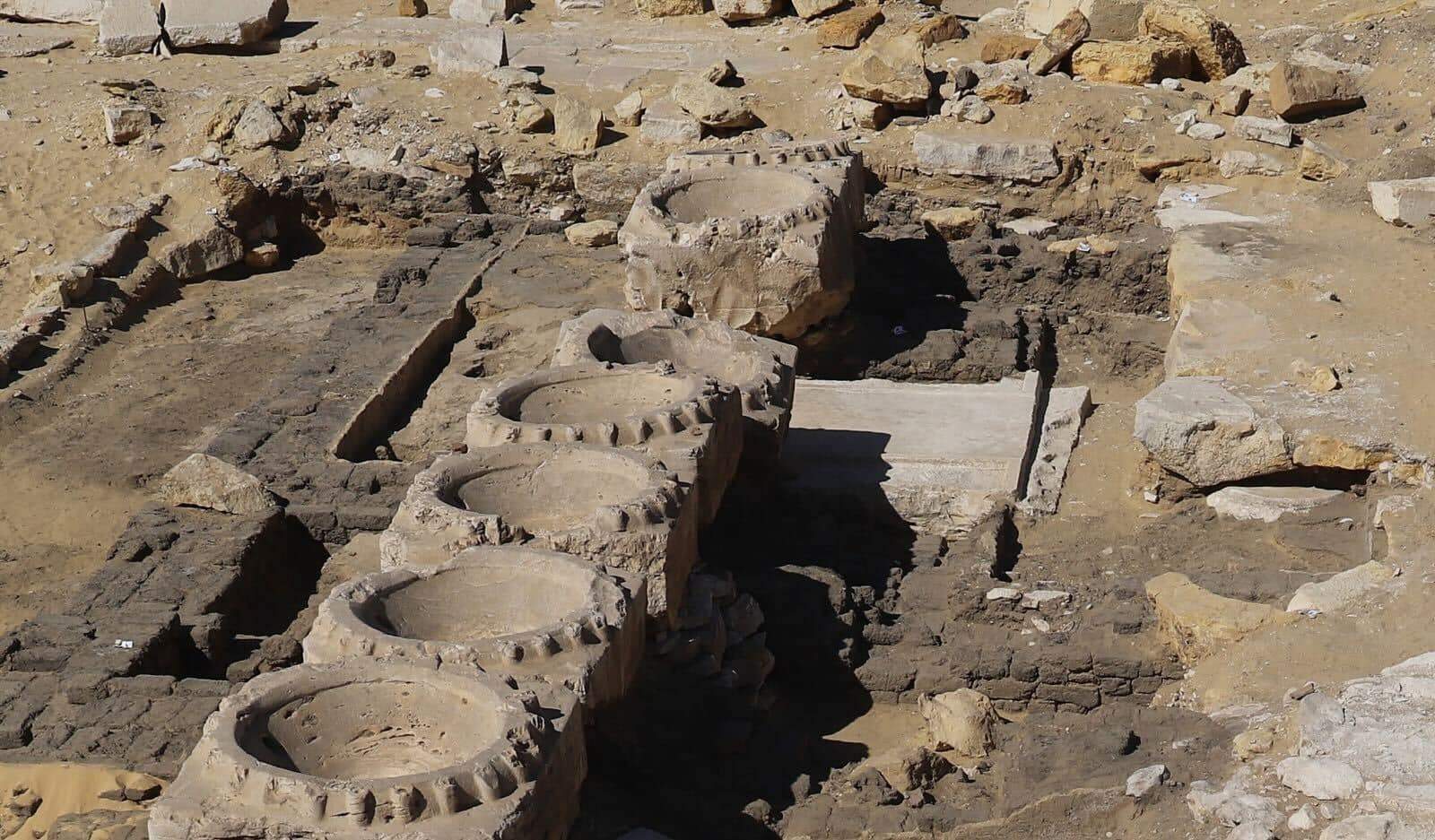In Abusir, Egypt, the remains of a building, probably one of four Solar Temples of the Fifth Dynasty not yet archaeologically documented, have been unearthed.
The joint Italian-Polish archaeological mission (University of Naples L’Orientale and the Polish Academy of Sciences in Warsaw) working in the Solar Temple of King Niuserre at Abu Ghurab, north of Abusir, has found the remains of a mud-brick building beneath the stone temple. According to preliminary studies, it may be one of the four lost solar temples dating back to the Fifth Dynasty and known from historical sources.
Mustafa Waziri, Secretary General of the Supreme Council of Antiquities, said excavations will be completed at the site to reveal more about this building. He further stated that the remains of the newly discovered building were accessed through a monumental entrance built of limestone, which led, to the north, to an area used for storage and, to the west, to a large courtyard paved with beaten mud. West of the latter, several large quartzite blocks with polished faces were also found embedded under the floor of the Solar Temple of Niuserre.
Ayman Ashmawy, head of the sector of Egyptian antiquities at the Supreme Council of Antiquities, explained that the remains of the uncovered building indicate that it was built with mud bricks and was partially destroyed by Niuserre to build his own temple. Many ceramic vessels were also discovered at the site, which may have been used in foundation rituals. Of these, particularly important are those found in the northeastern corner of Niuserre’s temple, under the stone foundation of the temple itself.
Mohamed Youssef, director of the Saqqara Inspectorate of Antiquities, added that the foundation deposits were found at the level of the mud-brick wall of the oldest temple and consisted mainly of beer jars, but also Meidum bowls and red-slipped-ware.
Rosanna Pirelli, mission director for the University of Naples L’Orientale, said several fragments of cretulae with seal impressions bearing royal names were also found. These include the name of Pharaoh Shepseskare of the Fifth Dynasty, about whom little information is available: the current discoveries could indicate his presence and activity at the site, which could change our knowledge of the history of this king and the Fifth Dynasty in general. Massimiliano Nuzzolo, director of the mission on behalf of the Warsaw Academy of Sciences, confirmed that the mission will soon complete its work in an effort to fully unearth the ancient temple and reveal more secrets about this building.
 |
| Egypt, remains of a building unearthed. Possibly one of the solar temples of the 5th Dynasty |
Warning: the translation into English of the original Italian article was created using automatic tools. We undertake to review all articles, but we do not guarantee the total absence of inaccuracies in the translation due to the program. You can find the original by clicking on the ITA button. If you find any mistake,please contact us.